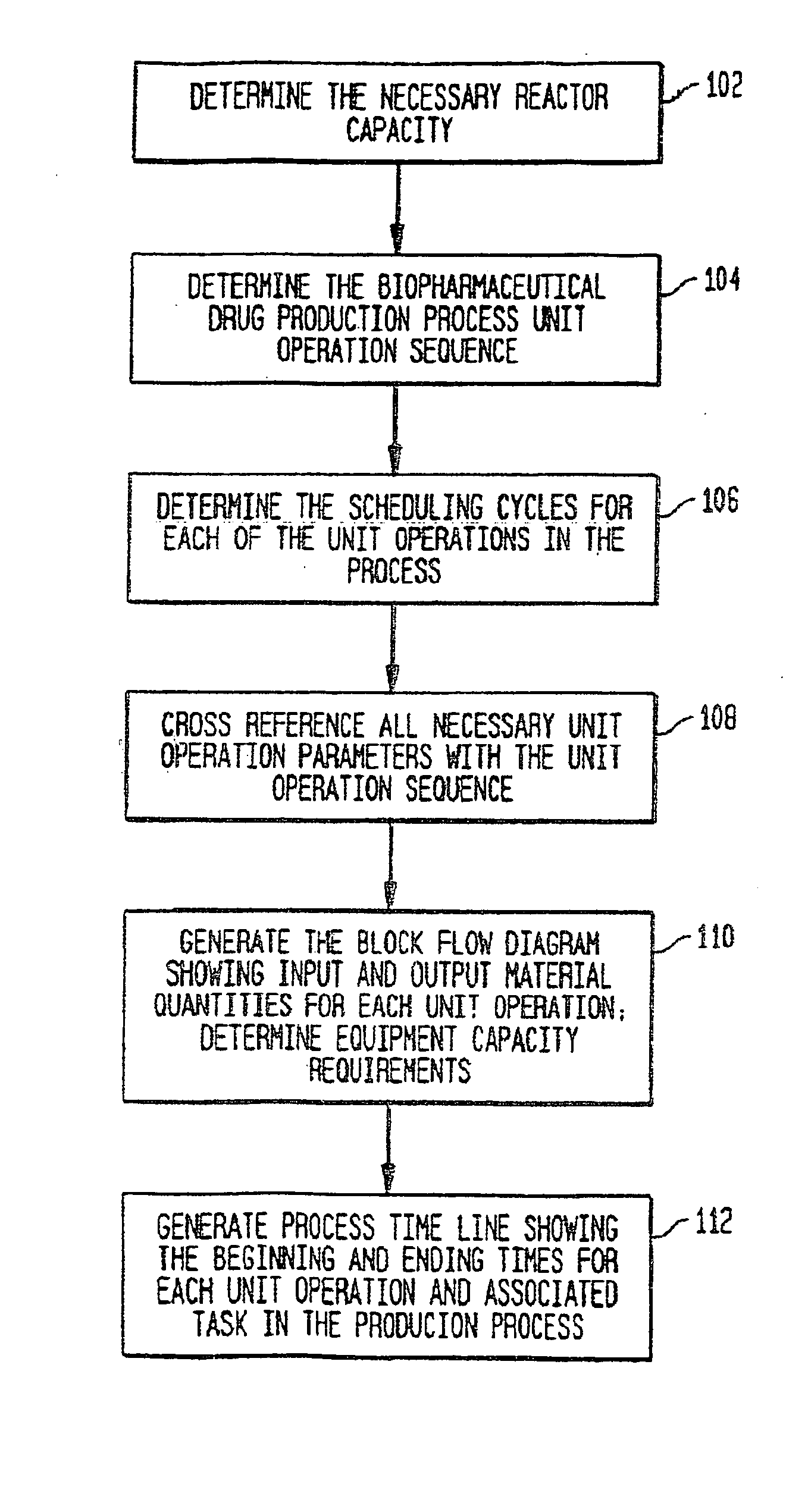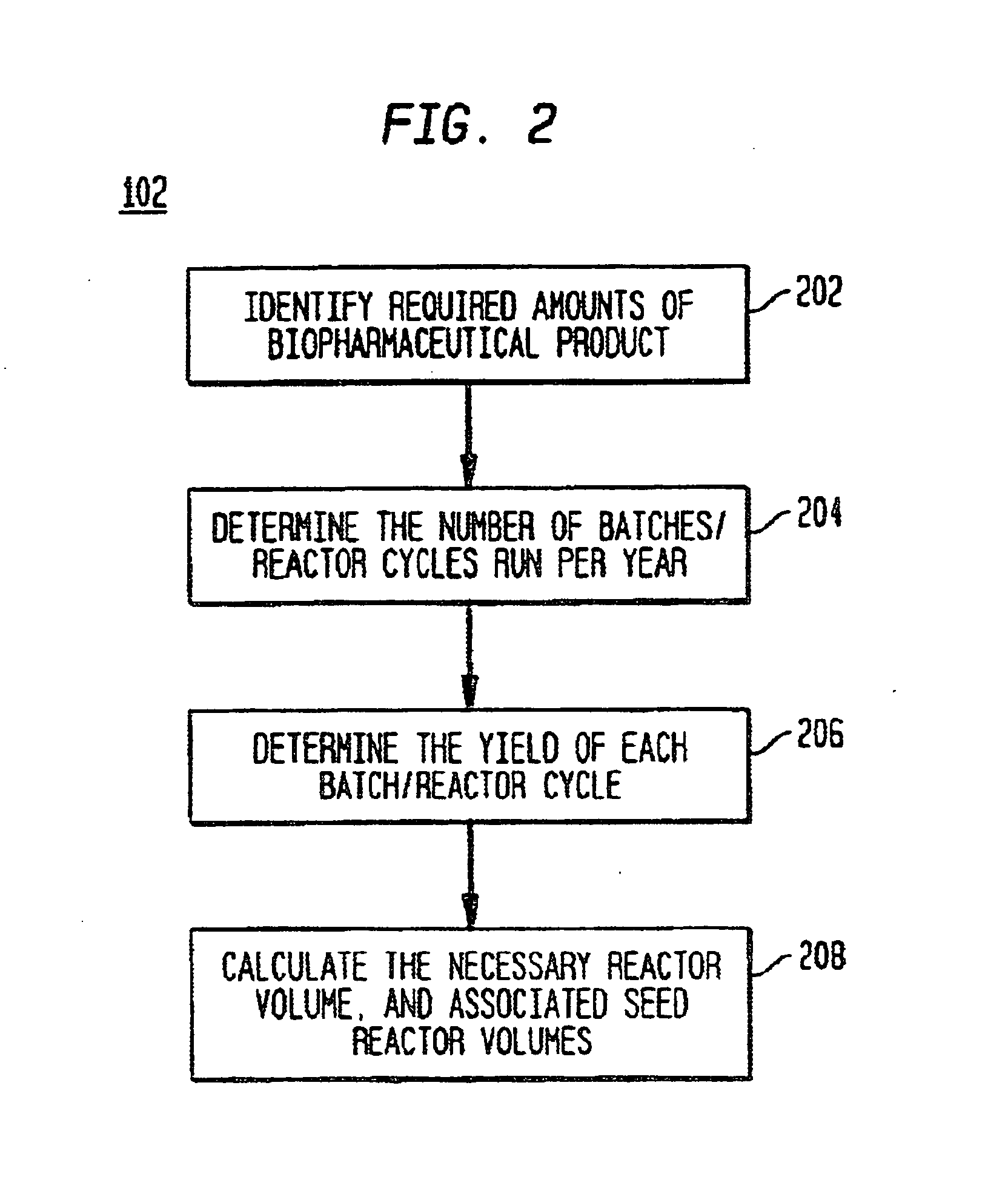Use of sub (partial) cycles, nested cluster cycles, and lot cycles for determining equipment capacities in a batch manufacturing facility
a batch manufacturing facility and sub-partial cycle technology, applied in the direction of total factory control, programme control, instruments, etc., can solve the problems of complex biopharmaceutical production process, and high cost of biopharmaceutical plant design
- Summary
- Abstract
- Description
- Claims
- Application Information
AI Technical Summary
Benefits of technology
Problems solved by technology
Method used
Image
Examples
Embodiment Construction
[0050] A description of preferred embodiments of the invention follows.
[0051] A system and method for the simulation and modeling of biopharmaceutical batch process manufacturing facilities using process time lines is described herein. The system employs an eleven-field delimited string code which specifies the unit identifier code and the iteration value for each of the ten levels of nested scheduling cycles—“Unit Operation Cycle-Sub Cycles,”“Unit Operation Cycles—Main Cycle,”“Unit Operation Cluster Cycle—Level 1—Sub Cycles,”“Unit Operation Cluster Cycle—Level 1—Main Cycle,”“Unit Operation Cluster Cycle—Level 2—Sub Cycle,”“Unit Operation Cluster Cycle—Level 2—Main Cycle,”“Unit Operation Cluster Cycle—Level 3—Sub Cycle,”“Unit Operation Cluster Cycle—Level 3—Main Cycle,” and “Batch Cycles” and “Lot Cycles”—of the biopharmaceutical drug production process being modeled. The method includes the step of selecting a sequence of unit operations wherein each of the sequence of unit operat...
PUM
 Login to View More
Login to View More Abstract
Description
Claims
Application Information
 Login to View More
Login to View More - R&D
- Intellectual Property
- Life Sciences
- Materials
- Tech Scout
- Unparalleled Data Quality
- Higher Quality Content
- 60% Fewer Hallucinations
Browse by: Latest US Patents, China's latest patents, Technical Efficacy Thesaurus, Application Domain, Technology Topic, Popular Technical Reports.
© 2025 PatSnap. All rights reserved.Legal|Privacy policy|Modern Slavery Act Transparency Statement|Sitemap|About US| Contact US: help@patsnap.com



